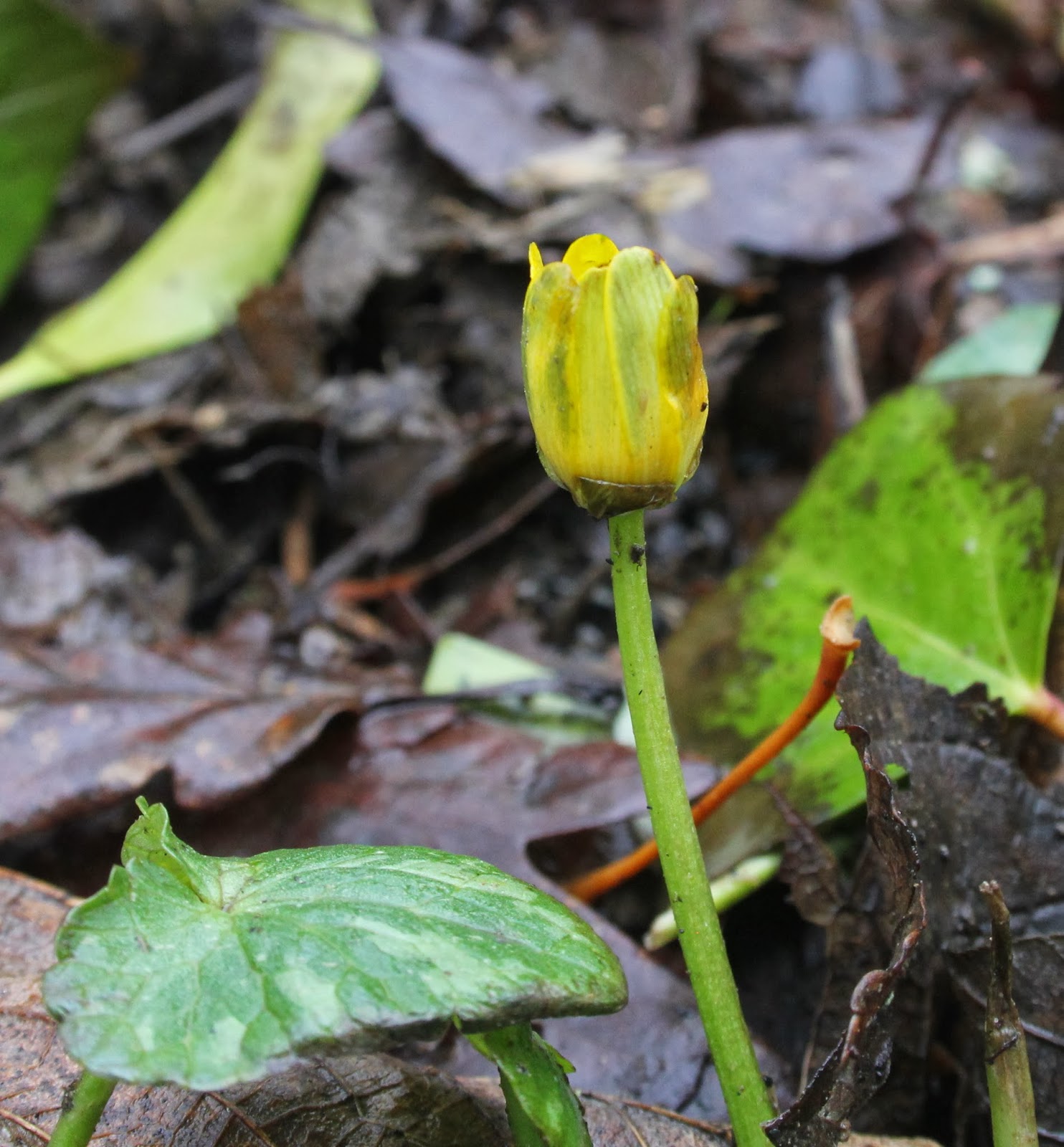Between the wet and windy squalls, we
finally made it to Stanbury cliffs to see what, if anything, the
severe weather had left in its wake.
The path to the cliffs was, as
expected, extremely wet and muddy in places requiring a detour to
prevent mud coming over the tops of our boots, but we were
undeterred.
.jpg) |
| Wave after wave of them ... |
Our first sight at the end of the
footpath above the beach was a Kestrel hovering in the teeth of the
wind. It was high tide and huge waves were crashing into the foot of
the cliffs, line after line of them. We determined to go towards
Higher Sharpnose passing the worst of the eroding cliffs on the way.
There were lots of Mole hills on the
South West Coastal Path and Badger evidence – well worn tracks
under the Blackthorn and obvious latrines beyond the little stream on
the way to Sharpnose.
.jpg) |
| The new detour |
There was the appearance of rock slides
once we were able to look back at the cliffs, but the most obvious
was the new track into the gorse (where there is usually Dodder in
season) to keep people away from the sheer eroded cliff. This has
been slipping for a long time and was very attractive to people and
dogs to inch to the edge and look over. As we inspected from a safe
distance we could see the small stream that follows the path before
falling over the cliff actually running uphill. On the detour we
thought a squall was coming in as the spots of rain hit us – it was
not, it was the small waterfall coming back over the path and wetting
us!
.jpg) |
| The uphill waterfall |
We headed nearer to Sharpnose and
spotted a Peregrine high over the cliffs. The views of the waves
breaking against the cliffs were spectacular.
On the return we identified sprinklings
of shale over the path and field where the storms has stripped loose
pieces from the cliff and flung them back inland. I would not have
liked to have been there in the teeth of it.
Back at the footpath half a dozen
Meadow Pipits were piping and feeding in the field as a Magpie
cruised over. The only other birds about was a group of very noisy
Herring Gulls obviously in their element.





.jpg)
.jpg)



